If Japanese cuisine has anything as globally popular as sushi, it is the noodle dish called ramen. Since WW2, this dish has been enjoyed all over the globe. And there are now several brands available that produce delicious instant ramen. However, if you are allergic to gluten or have celiac disease, you may wonder, “is ramen gluten free?”
Ramen is not gluten-free, as traditional ramen noodles are made with wheat. But there are many non-gluten noodles. But be careful about the seasonings in instant ramen. Plus, the ramen bowl you order at a restaurant may have wheat flour as a thicker.
Gluten is not the only concern in ramen, as it is also loaded with MSG (monosodium glutamate), which is typically considered relatively unsafe for human consumption. However, is that all you need to be concerned about when it comes to ramen? Certainly not!
Table of Contents
Is Ramen Gluten Free?
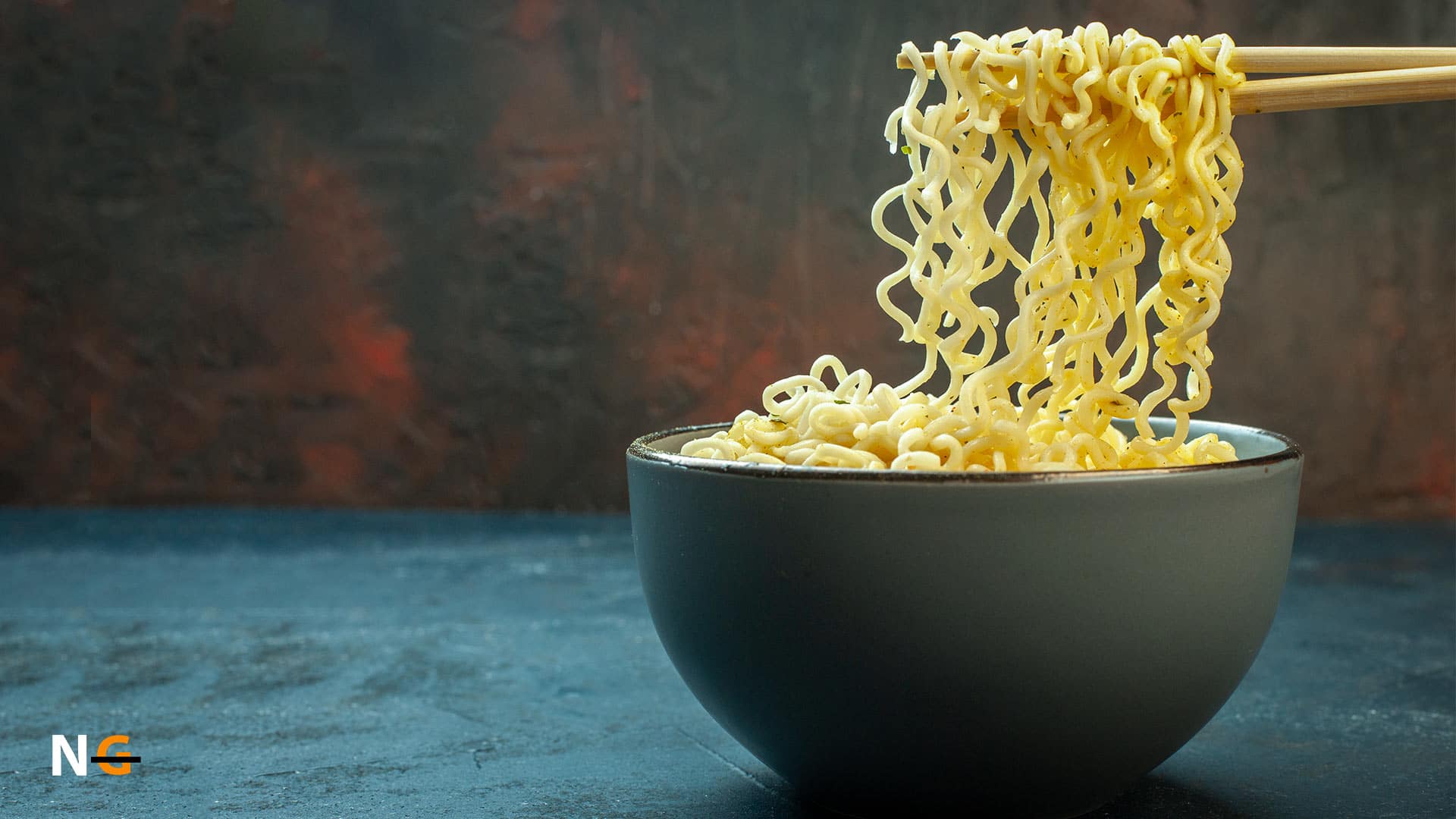
Ramen is one of the most popular complete meals. However, many people are concerned about its gluten contents, especially if they follow a gluten-free diet or have celiac disease. So, if you really want to know, “is ramen gluten-free,” the answer is “no” because the traditional ramen noodles have wheat flour!
Although ramen is mainly made of wheat noodles, varieties made of rice flour, buckwheat flour, and other starch-based ramen noodles are also available. However, it’s not just the noodles that you need to worry about in ramen.
Instant noodles usually come with small packets of seasoning. These are loaded with additives – and there’s a high possibility that they have gluten content in them. In addition, if you order a bowl of ramen at a restaurant, the soup in the ramen bowl may contain wheat flour as a thickener.
Also Read:- Is Ghirardelli Chocolate Gluten Free?
What is Ramen?
Ramen is a traditional instant noodle dish from Japanese cuisine. Although the base ingredient is just wheat-based noodles, it is typically served with meat broth, boiled eggs, mushrooms, seaweed, pork chops, fish cakes, onions, and a lot more. There is no set recipe for ramen, as you can customize it according to your taste buds.
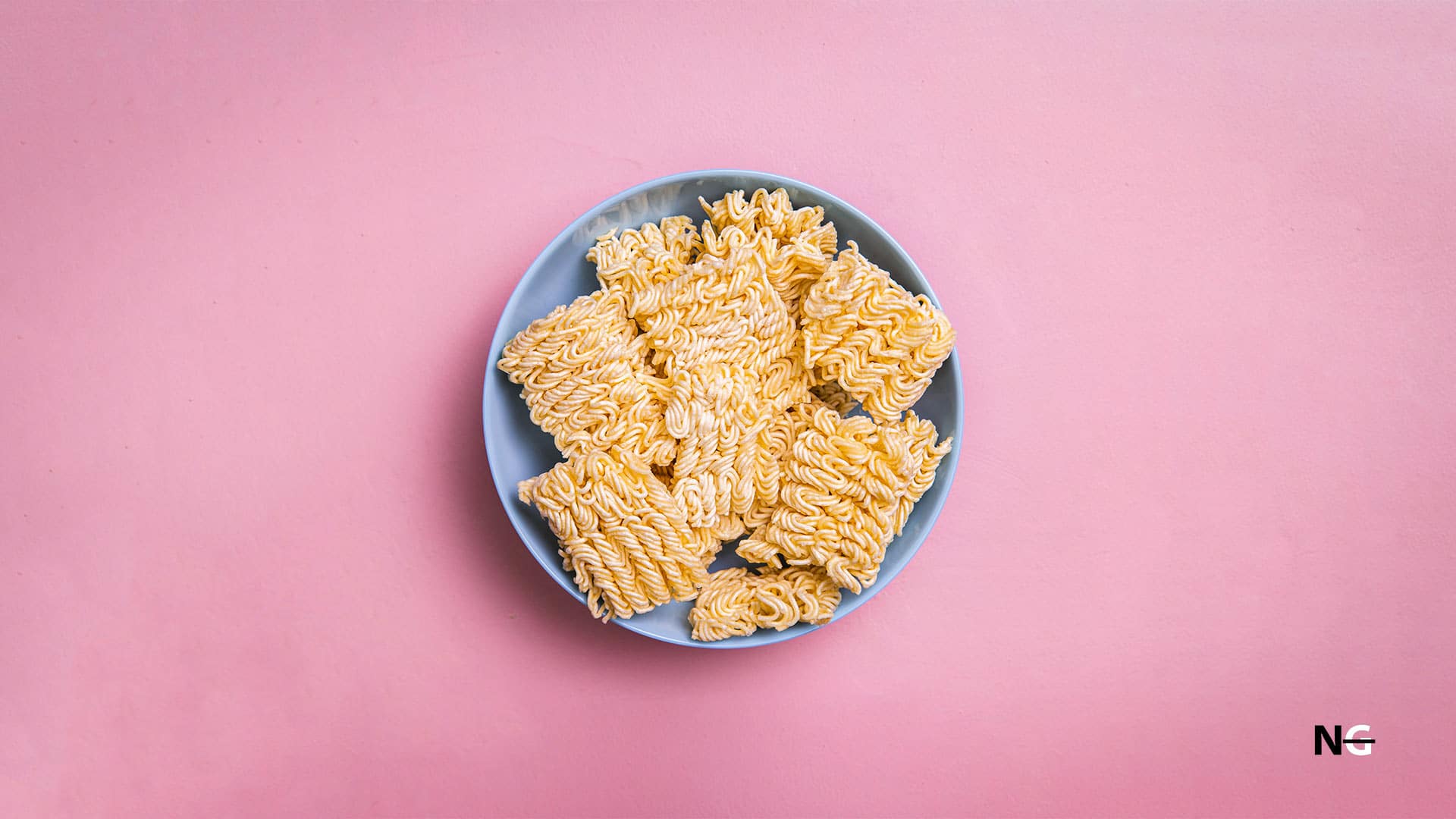
Although wheat-based noodles are tastier and widely used, there are many rice-flour and starch-based noodles also used in ramen nowadays to make it safe for people having gluten allergies. However, noodles are not the only concern, as the broth may also have gluten content in it.
Both dark and light soy sauces are also used in ramen broth, which can have gluten in it. Besides, most of the preservatives, taste enhancers and flavoring agents also have gluten content. So, if you really want to enjoy the taste of ramen, buy a gluten-free variant, or make one in your home with rice, millet, or potato starch.
It’s not just gluten that you should be worried about when it comes to ramen – whether freshly made or packaged into the “ready-to-cook” version. Besides the gluten content, ramen is loaded with TBHQ (Tertiary-butyl hydroquinone), a preservative that is a byproduct of petroleum and is unsafe for human health.
This Japanese comfort food also has soy sauce, which can have gluten content in it. It is also loaded with saturated fat and sodium. Besides, the calorie content is also on the higher side. So, although it is widely circulated as daily food, it is undoubtedly not healthy and safe to consume ramen every day.
History of Ramen
Ramen is basically a Japanese adaptation of the traditional wheat noodles from Chinese cuisine. It was first introduced in Japan by the advisor to Tokugawa Mitsukuni and neo-Confucian scholar Zhu Shunsui during the late 1660s. However, this fact is not historically proven, and many historians claim that ramen was introduced to Japan by Chinese immigrants from the Yokohama town during the last 19th century.
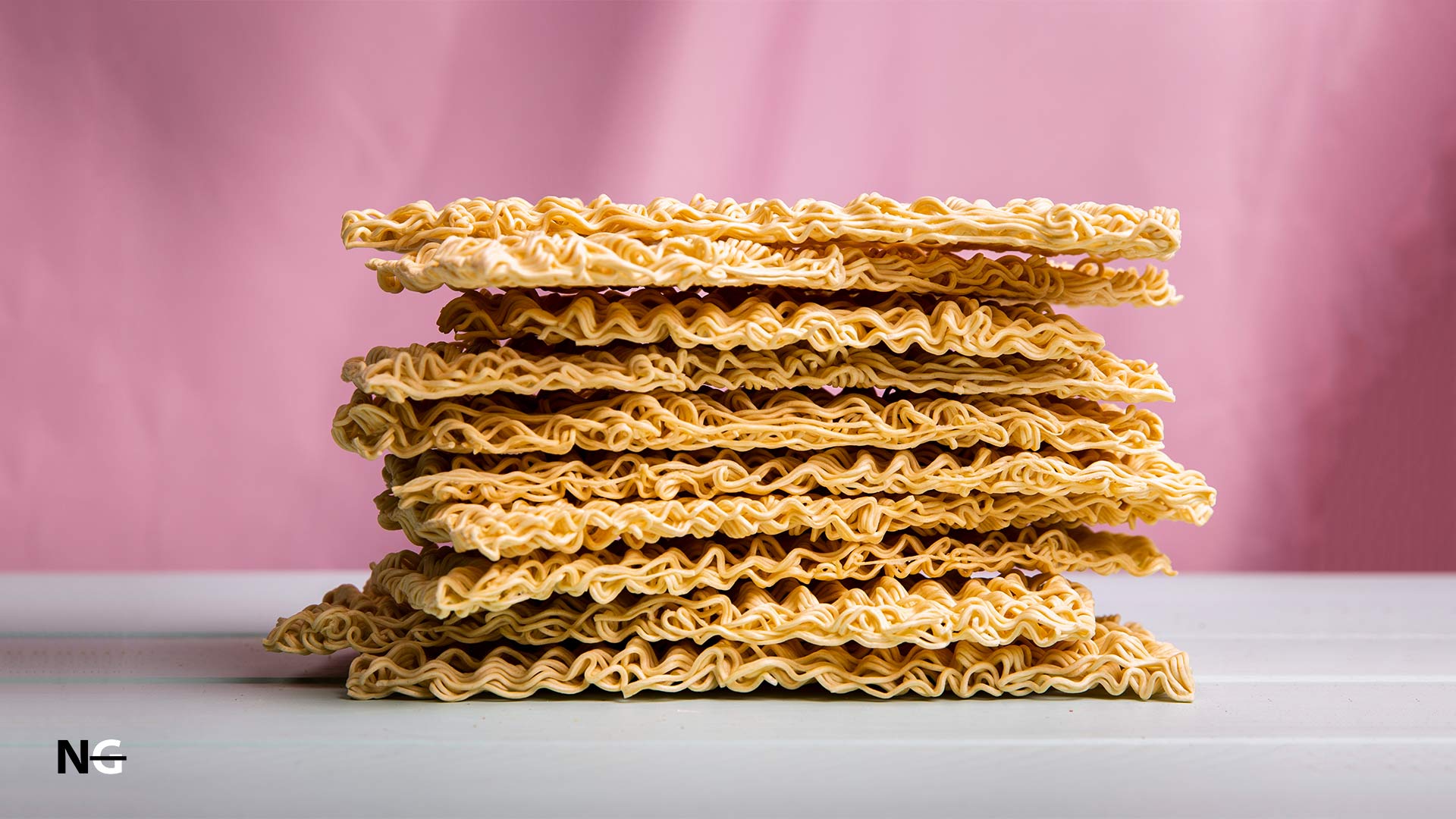
According to the official record of the Yokohama Ramen Museum, ramen first originated in China and traveled to Japan through immigrants in 1859. And the traditional version of ramen was served with Chinese-styled pork roasts and broth. Another theory also suggests that ramen first originated in the Canton and Shanghai district during the early 1900s.
According to ramen connoisseur Hiroshi Osaki, ramen was first sold as a dish in Yokohama province in 1910. At that time, Chinese immigrants-run stalls in the Yokohama district started using charumera, a Chinese musical horn, to attract clients. And it started gaining popularity through these stalls during the early Shōwa period.
Nowadays, there are many versions of ramens around the world – from the super-spicy Korean ramen cups to the Chinese ramen bowls made from scratch. Don’t forget the Tibetan version of the soupy noodles, i.e., Thukpa.
Gluten Free Ramen Brands
If you have celiac disease and are truly worried to know, “is ramen gluten-free,” you should choose a gluten-free variant. But don’t worry, as there are several excellent brands that now produce this popular Japanese item. And we have selected the top five brands that you can try with complete confidence, even if you have gluten allergies.
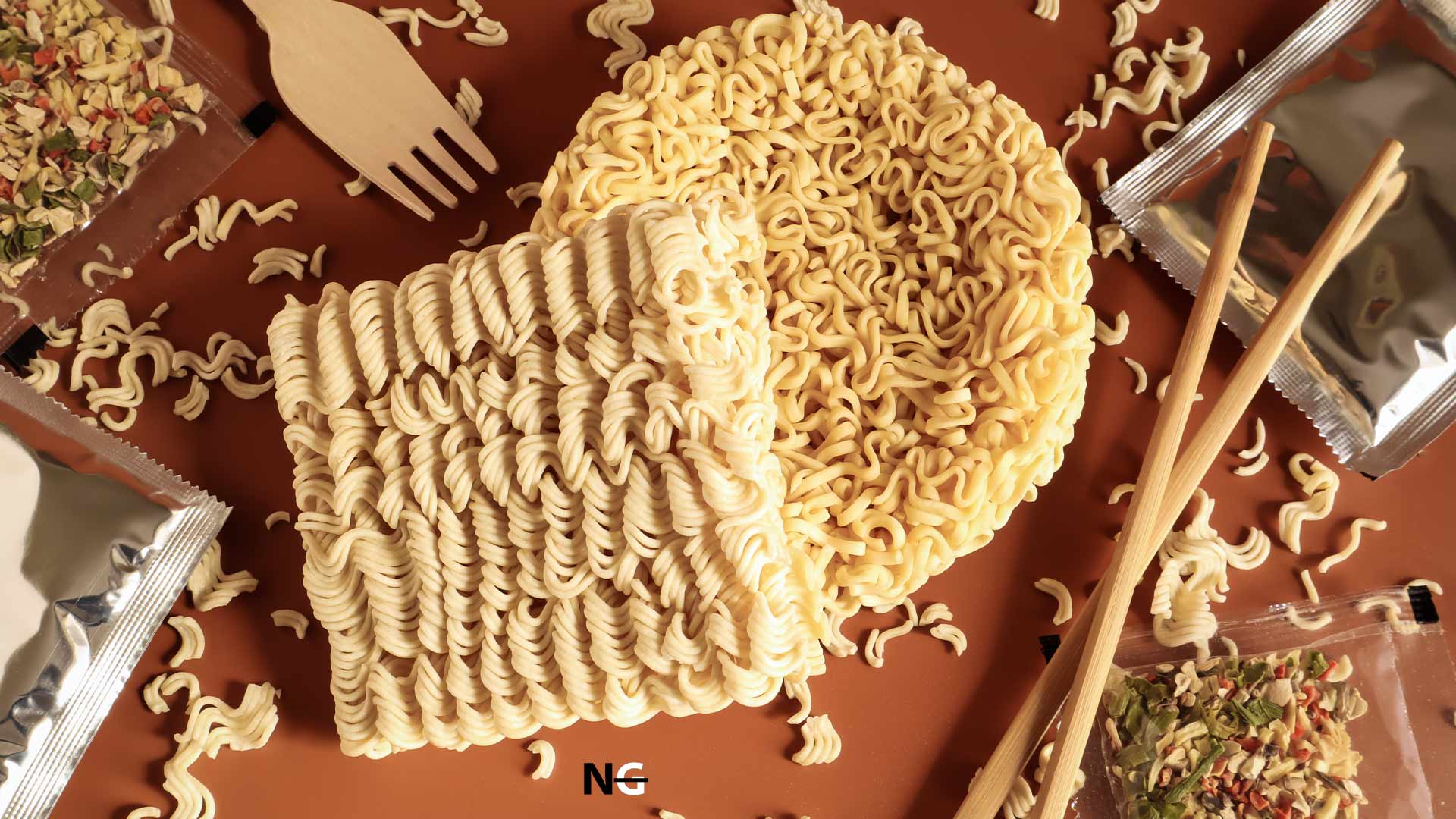
Lotus Foods Buckwheat Shiitake Rice Ramen: It is not just officially certified as gluten-free but is also vegan and kosher. A single serving of this fantastic ramen has just 150 calories. Besides, it has 31 grams of carbohydrate, 1.5 grams of fat, 4 grams of protein, 1 gram of sugar, and 370 mg of sodium.
Lotus Foods Purple Potato & Brown Rice Ramen: The sweet potato powder that comes with this gluten-free ramen is the instant game-changer. A single serving of this dish has 300 calories with just 2 grams of sugar. It has 64 grams of carbohydrate, 6 grams of protein, 2.5 grams of fat, and 640 mg of sodium in it.
Lotus Foods Organic Millet & Brown Rice Ramen: This officially certified gluten-free ramen is primarily made of organic brown rice, white rice, and millet flour. A single serving of this product has 130 calories in it. Besides, it has 24 grams of carbohydrate, 4 grams of protein, and 1.5 grams of fat.
Better Than Noodles Konjac Noodles: This gluten-free and non-GMO ramen is made of organic konjac and oat fiber. A single serving of this delicious ramen has just 15 calories in it. It has just 4 grams of carbohydrate without any trace of protein, saturated, or unsaturated fat.
Sea Tangle Kelp Noodles: The kelp noodle from the house of Sea Tangle is primarily made of kelp, sodium alginate, and water. A single serving (1/2 cup) of this ramen has just 6 calories in it without any trace of saturated and trans fats. Besides, it has just 6 grams of carbohydrate and 35 mg of sodium.
Gluten Free Ramen Recipe
If you are still worried, “is ramen gluten-free”, and you don’t even want to eat the consumer product that is readily available in the supermarkets, it is better to make ramen yourself in your home. And it is not even difficult to make one for yourself.
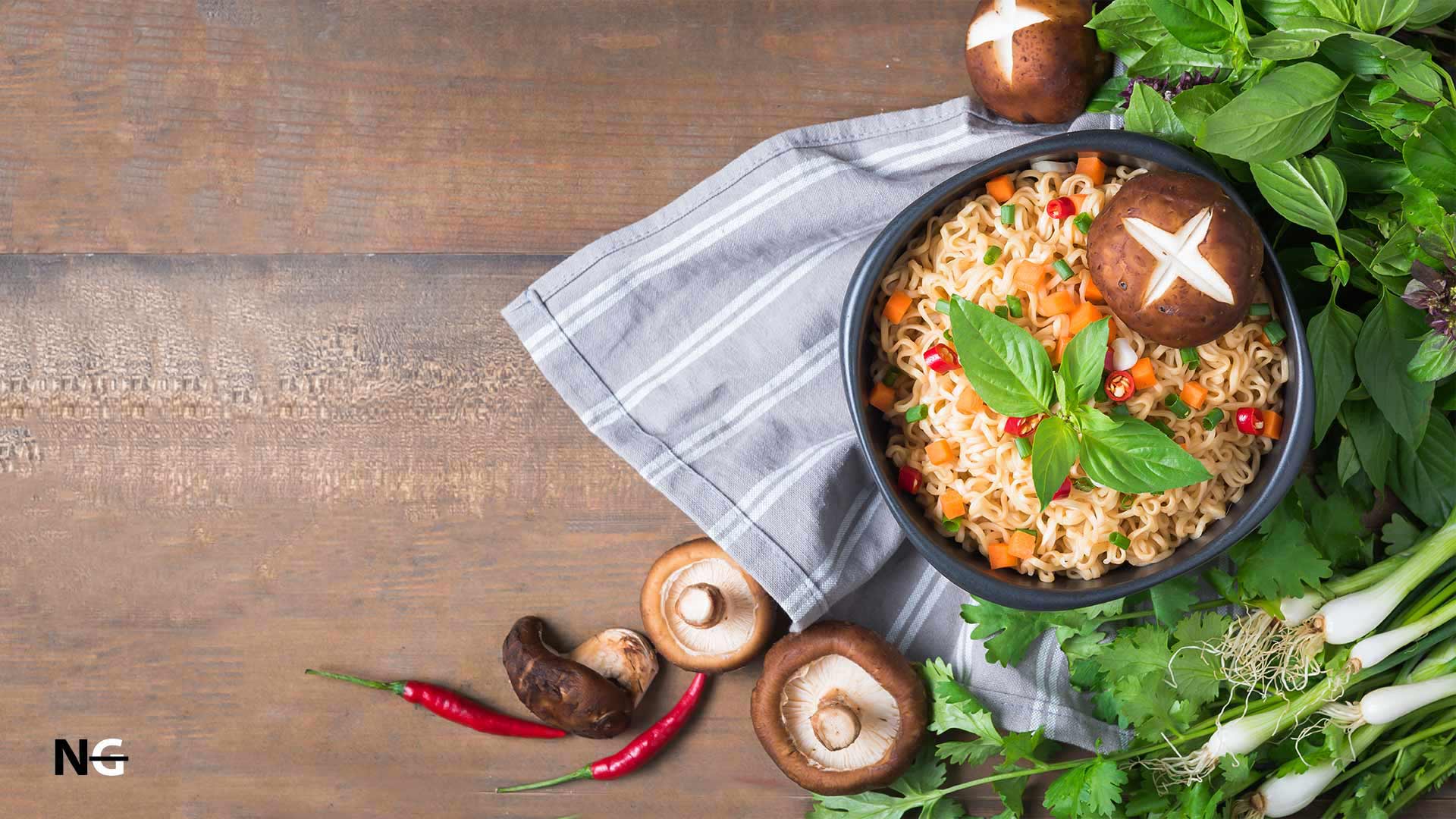
Ingredients
For Soup –
- Rice or starch-based noodles: 4 packs
- Carrots: ½ cup (shredded)
- Sugar snap peas: ½ cup (blanched in hot water)
- Button mushroom: ½ cup (sliced – blanched in hot water)
- Green scallion: ½ cup (freshly chopped)
- Spinach: ½ cup (baby leaves)
- Tofu: 1 cup (cubed – extra-firm)
- Miso paste: 2 tbsps
- Tamari: 4 tsps
For Bouillon Powder –
- Yeast flakes: ½ cup
- Kosher salt: 2 tbsps
- Turmeric powder: ¼ tsp
- Onion powder: 1 tbsp
- Garlic powder: 1½ tsps
- Ground ginger: 1/8 tsp
- Dried sage: ½ tsp
- Thyme: ¾ tsp (dried)
- Wasabi powder: ¼ tsp
- Paprika: 1 tsp (smoked)
- Coconut palm sugar: 1 tbsp
Procedure
- Pour 2 cups of water in a mid-sized glass bowl and add all the ingredients for bouillon powder. Mix slowly until all the powders mix well and make a soupy texture.
- Take a medium pan and add 4 cups of water. Add the noodle nests and cook as directed in the package. Make sure the noodles are soft and separated from each other.
- Once the noodles are fully cooked, drain the hot water, rinse with cold water, and set aside at room temperature.
- Take a glass jar and add chopped carrots, spinach leaves, mushrooms, sugar snap peas, tofu, miso paste, and tamari.
- Put one nest of cooked noodles and add 1 tsp of homemade bouillon powder in the jar.
- Add freshly chopped green scallion and serve the entire dish hot.
✍️ Note: You can put all the ingredients in an airtight glass jar and keep it in the refrigerator for up to 3 days. However, you need to allow it to come down to room temperature and then heat it again before serving the ramen.
Final Words
Ramen is delicious and quite popular. But is ramen gluten free? Thankfully, some varieties of it are safe while the vast majority of them are not. But you shouldn’t consume the naturally gluten free ones too frequently, especially the instant ones. Instant ramen is full of harmful additives like TBHQ and MSG.
Besides, most ramen varieties are loaded with sodium and soy sauce. Ramens typically come in Styrofoam cups that may have BPA. If you have celiac disease or if you are allergic to gluten, you can make gluten free at home or buy a gluten-free variant to enjoy.
FAQs
Is Ramen Vegan?
Traditional ramen is not vegan as it is typically served with boiled eggs and pork chops along with meat broth. Besides, consumer-grade instant ramen noodles have chicken, pork, or beef flavorings. These instant ramens also use several animal-derived preservatives and flavoring agents.
Is Ramen Keto?
No, ramen is not suitable for the keto diet. Firstly, ramen is full of carbohydrates, which is not permissible in a keto plan. And secondly, ramen has a lot of calories along with trans fats. So, you shouldn’t consume instant or homemade ramen if you are following a keto diet.
Is Ramen Dairy-Free?
Yes, the wheat or rice flour-based noodles used in ramen are entirely dairy-free. However, most of the seasonings that come with instant ramen have dairy content, especially lactose. If you are from the USA, you’ll see your typical instant ramen has a milk content label on it.
Is the Seasoning Packet in Ramen Gluten-Free?
No, along with the noodles used in instant ramen, the seasoning and soup mix packets that come with it are also not gluten free. Most of the seasonings contain dehydrated soy sauce that is full of gluten. Besides, hydrolyzed wheat protein is also used in the mixes as a taste enhancer.
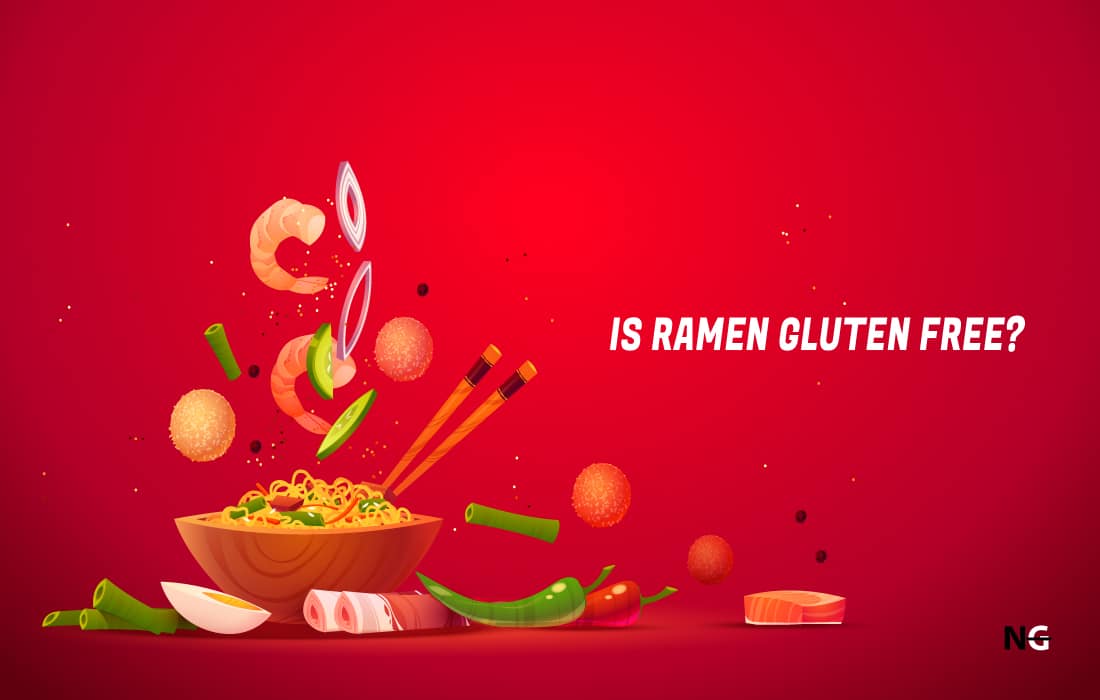

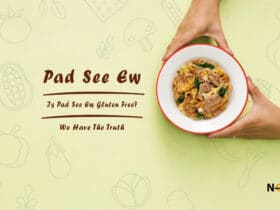





Leave a Reply
View Comments